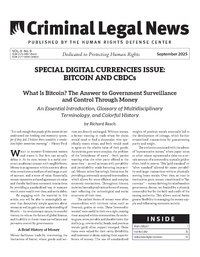“It is well enough that people of the nation do not understand our banking and monetary system, for if they did, I believe there would be a revolution before tomorrow morning.” – Henry Ford
What is money? Everyone needs and wants it, but few can actually define it. At its core, money is a social construct, an abstract concept with tangible forms. Money is an agreement within a society about what constitutes a medium of exchange, a unit of account, and a store of value. Essentially, money represents a shared agreement on value and thereby facilitates economic interactions by providing a standardized way to measure worth, store wealth over time, and settle debts.
By engaging with the material in this article, you will be able to meaningfully answer that deceptively simple question about money as well as gain a clear understanding of Bitcoin – its revolutionary nature, its eventful history, its role as the future of global finance, and its ability to thwart mass surveillance and pervasive control by governments.
A Brief History of Money
Money facilitates trade by overcoming the limitations of barter, where goods and services are directly exchanged. Without money, a farmer wanting to trade …
Welcome to this month’s issue of Criminal Legal News (“CLN”). As you can see, it’s devoted to the revolutionary and controversial topic of digital currencies, spotlighting the two most important participants in the enduring clash between individual liberties and state control. In this issue, we take a deep dive into Bitcoin – the groundbreaking decentralized digital monetary network that is appropriately characterized as “freedom money” – and Central Bank Digital Currencies (“CBDCs”) – the government-controlled digital form of fiat money that effortlessly enables mass surveillance, programmable restrictions, and unparalleled control. Whether you’re skeptical of these evidence-based assessments or already convinced, this issue of CLN is your vital resource for understanding these two starkly different digital currencies and the stakes involved. Our meticulously researched articles will challenge your assumptions, provide fresh insights, and entertain you along the way.
“Crypto Week” Showdown in Congress Over CBDCs
The timeliness of this issue is underscored by the dramatic events that unfolded in Washington, D.C., during “Crypto Week” from July 14 to 18 in the United States House of Representatives. What was intended as a bipartisan celebration for passing a trio of digital asset bills nearly imploded entirely due to a dramatic intra-party …
“He who controls the food supply controls the people; he who controls the energy can control whole continents; he who controls money can control the world.” – Widely Attributed to Henry Kissinger
Introduction to Central Bank Digital Currencies
Central banks around the world have long issued money in physical form, but the rise of digital technologies has spurred them to explore new frontiers, such as a Central Bank Digital Currency (“CBDC”), a digital version of a nation’s fiat money issued and backed directly by the central bank. Proponents herald CBDCs as the next evolution of money, a digital counterpart to physical cash, promising a more efficient financial landscape: reduced transaction fees, streamlined e-commerce and international transfers, and greater financial inclusion for the unbanked. They envision a “digital banknote” for an increasingly digital world, fostering innovation and modernizing payment systems. Yet these promises conceal a sinister reality. CBDCs are not a mere upgrade to our financial infrastructure – they represent a seismic transformation of money itself, centralizing unprecedented power in the hands of governments and threatening financial privacy and individual liberty on an unimaginable scale.
Imagine an ordinary citizen, Jane, buying coffee with a CBDC. Unlike cash, which leaves no …






